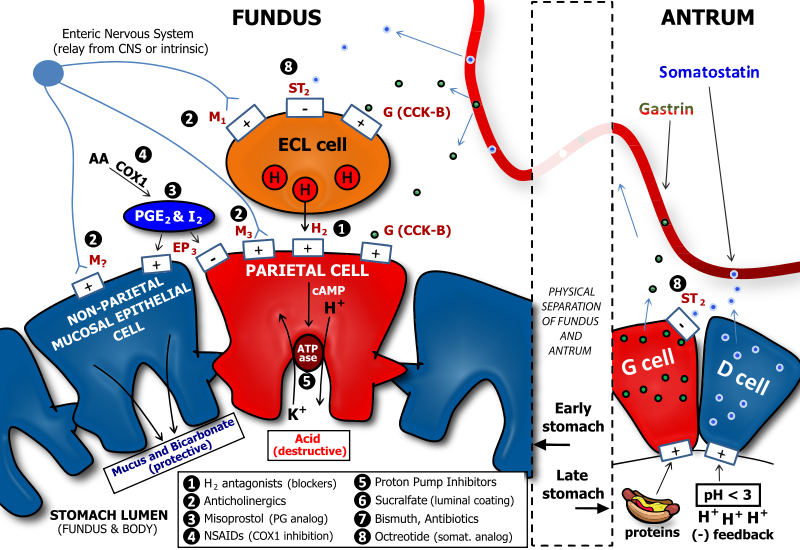파일:Determinants of Gastric Acid Secretion.svg

SVG 파일의 PNG 형식의 미리보기 크기: 800 × 550 픽셀. 다른 해상도: 320 × 220 픽셀 | 640 × 440 픽셀 | 1,024 × 704 픽셀 | 1,280 × 880 픽셀 | 2,560 × 1,760 픽셀 | 1,206 × 829 픽셀
원본 파일 (SVG 파일, 실제 크기 1,206 × 829 픽셀, 파일 크기: 741 KB)
파일 역사
날짜/시간 링크를 클릭하면 해당 시간의 파일을 볼 수 있습니다.
| 날짜/시간 | 섬네일 | 크기 | 사용자 | 설명 | |
|---|---|---|---|---|---|
| 현재 | 2011년 1월 16일 (일) 20:03 |  | 1,206 × 829 (741 KB) | Vanwa71 | .. |
| 2011년 1월 16일 (일) 19:57 |  | 1,206 × 829 (486 KB) | Vanwa71 | Reverted to version as of 10:39, 16 January 2011 | |
| 2011년 1월 16일 (일) 19:55 |  | 1,206 × 829 (1.33 MB) | Vanwa71 | Linked instead of embedded new graphics last time. | |
| 2011년 1월 16일 (일) 19:39 |  | 1,206 × 829 (486 KB) | Vanwa71 | Reverted to version as of 06:03, 16 January 2011 | |
| 2011년 1월 16일 (일) 19:37 |  | 1,206 × 829 (437 KB) | Vanwa71 | cool effects | |
| 2011년 1월 16일 (일) 15:03 |  | 1,206 × 829 (486 KB) | Vanwa71 | Small detail edits. | |
| 2011년 1월 16일 (일) 14:57 |  | 1,206 × 829 (484 KB) | Vanwa71 | Fixed gastrin and somatostatin flaws | |
| 2011년 1월 16일 (일) 14:14 |  | 1,206 × 829 (472 KB) | Vanwa71 | Forgot categories. | |
| 2011년 1월 16일 (일) 14:11 |  | 1,206 × 829 (472 KB) | Vanwa71 | I finally started using my head, and converted all the text to outlines to keep it exactly as I wanted it. | |
| 2011년 1월 16일 (일) 14:05 |  | 1,206 × 829 (214 KB) | Vanwa71 | Please bear with me, I finally looked up websafe fonts instead of trial and error. Let's hope this works. |
이 파일을 사용하는 문서
다음 문서 1개가 이 파일을 사용하고 있습니다:
이 파일을 사용하고 있는 모든 위키의 문서 목록
다음 위키에서 이 파일을 사용하고 있습니다:
- el.wikipedia.org에서 이 파일을 사용하고 있는 문서 목록
- en.wikipedia.org에서 이 파일을 사용하고 있는 문서 목록
- fr.wikipedia.org에서 이 파일을 사용하고 있는 문서 목록
- hi.wikipedia.org에서 이 파일을 사용하고 있는 문서 목록
- id.wikipedia.org에서 이 파일을 사용하고 있는 문서 목록
- ja.wikipedia.org에서 이 파일을 사용하고 있는 문서 목록
- sq.wikipedia.org에서 이 파일을 사용하고 있는 문서 목록
- te.wikipedia.org에서 이 파일을 사용하고 있는 문서 목록
- zh.wikipedia.org에서 이 파일을 사용하고 있는 문서 목록
- zh.wikibooks.org에서 이 파일을 사용하고 있는 문서 목록